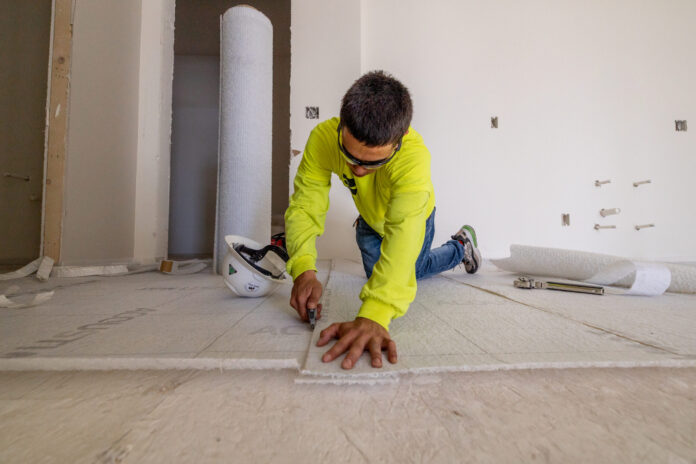Amidst the bustling cacophony of urban life, an oasis of tranquility at home is more essential than ever. As renovating for quietude gains traction, introducing a sound mat to your dwelling can be a game-changer.
By curbing the intruding noises, it offers solace and comfort. Embark on this informative journey and discover how you can create your sanctuary of silence, one step at a time.
Benefits of Noise-Reducing Renovation
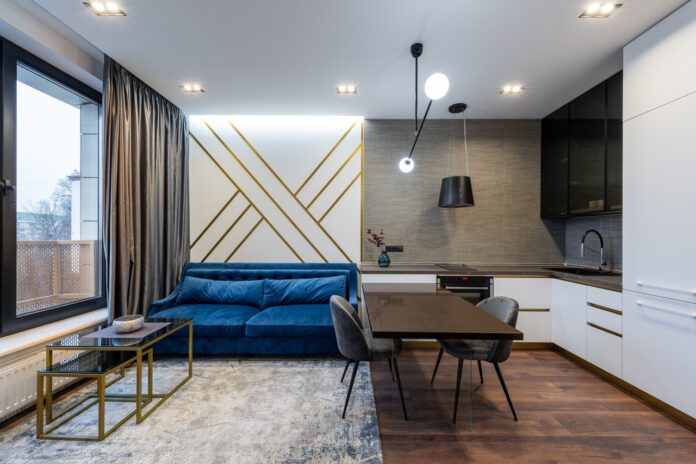
Living in noisy environments can lead to unwarranted stress, hindered concentration, and broken sleep patterns. Soundproofing your space is not just about peace; it’s about overall well-being.
For homeowners with children, it offers undisturbed nap times and ensures quieter evenings when the kids hit the bed. With more folks working from home, a noise-reduced environment can optimize focus and productivity. Therefore, call a floor Leveling concrete contractor and they will do it for you.
Choosing a quiet home over noise isn’t solely about lifestyle enhancement. Property appraisers often consider soundproofing when valuing houses. By minimizing external disturbances, you can increase the resale value of your home. Future buyers, recognizing this addition, might be willing to pay a premium for a peaceful living experience.
Ever noticed a better ambiance in quieter restaurants or stores? A soundproofed space reduces ambient noise, elevating experiences. Whether you’re watching a movie, enjoying a family dinner, or indulging in a book, the absence of disruptions enhances the quality of moments spent indoors.
Choosing the Right Sound Mat
The market offers a myriad of choices, but not all sound mats are crafted equal. Some excel in dampening airborne sounds like conversations, while others counteract impact noises like footsteps. Recognize the primary noise issues in your space and select a mat that suits your needs best.
Material matters. Thicker, denser mats usually provide superior noise insulation. However, they might not be feasible for every space due to weight or thickness constraints. Scan for with multiple layers or those infused with mass-loaded vinyl. These can render exceptional sound insulation without adding significant height or weight.
Budget, as always, plays its part. While investing in quality is pivotal, it’s unwise to overshoot your budget. Look for products that promise a balance between cost and effectiveness. Reading user reviews and seeking professional advice can guide your decision towards a satisfactory purchase.
Tools and Materials Needed
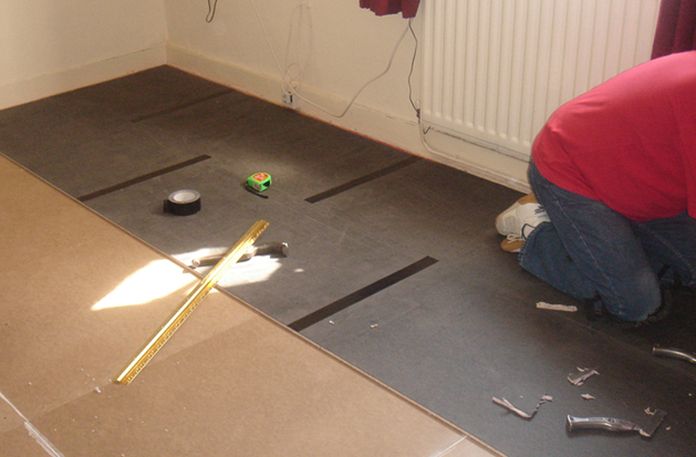
Crafting a quieter home requires the right tools. Essential instruments include a utility knife, a straightedge, measuring tape, and adhesive. Depending on your space, a stapler might be useful, especially for wall or ceiling installations.
Materials aren’t just confined to the sound mat. Sealants are crucial in ensuring no sound gaps remain after installation. While self-adhesive sound mats are available, having a separate adhesive ensures a firmer and long-lasting grip.
Safety first. Always wear gloves to protect your hands and safety glasses to shield your eyes from unexpected mishaps. Work in a well-lit space to enhance precision and minimize potential errors.
Preparing Your Workspace
Begin with a thorough cleanup. Remove furniture, rugs, and other obstructions. For walls and ceilings, ensure that paintings, light fixtures, or other hangings are safely stored. A clear workspace simplifies the installation process, making it seamless and efficient.
Dust and debris can impede adhesion. Sweeping, vacuuming, and wiping surfaces guarantee that your sound mat adheres without issues. Dry the space adequately, ensuring no moisture remains.
Marking the area aids in precise installation. With your measuring tape and chalk or marker, demarcate the region where the mat will be placed. It will serve as a guide during the installation, ensuring the mat aligns perfectly with your intended area.
Measuring and Cutting
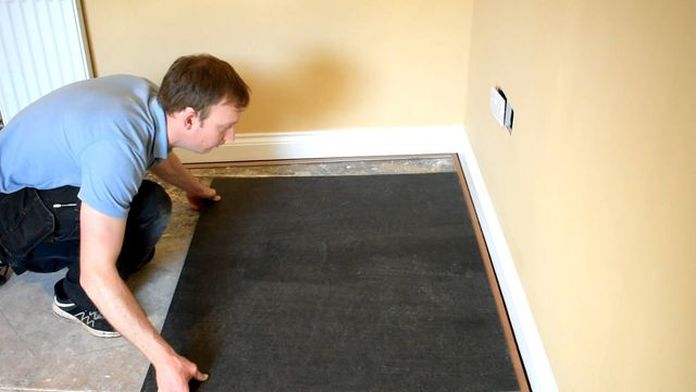
Accuracy here is paramount. Measure the length and breadth of your intended area multiple times to ensure precision. Note down the measurements, always rounding up to account for any discrepancies.
Using the straightedge and a marker, trace out the exact dimensions on the mat. While doing so, remember to keep a small surplus margin. It’s better to have a slightly larger piece that you can trim later than falling short.
Armed with your utility knife, cut along the marked lines with steady hands. For thicker mats, multiple passes might be necessary. Always use a sharp blade to ensure clean cuts and prevent fraying.
Installing Sound Mat in Floors
Start by laying out the mat, ensuring it aligns with your previously marked guidelines. If the mat has an adhesive backing, carefully peel off the protective layer and press down, smoothing out any bubbles or wrinkles.
Overlap sections slightly if you’re using multiple mats. This overlapping ensures no gaps through which sound can escape. Remember to secure these overlaps with a robust adhesive, ensuring they stay put.
Weight can be your ally. Once the mat is laid down, walk over it or use a weighted roller. This action helps in securing firmly in place, making sure every inch is adhered to correctly.
Installing on Walls
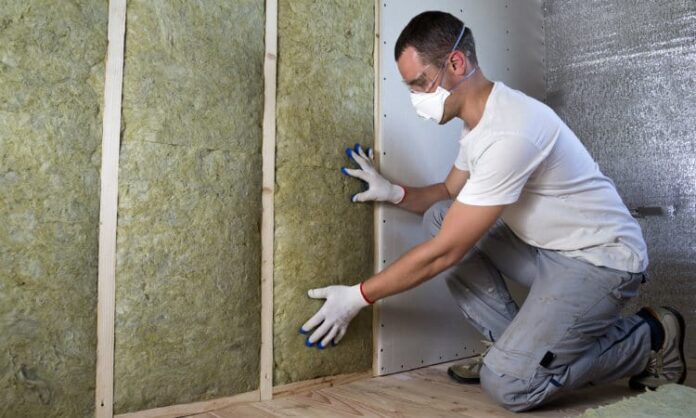
Wall installations are a tad trickier due to gravity’s interplay. Begin at the top, slowly unrolling the mat downwards. If the mat isn’t self-adhesive, apply adhesive generously on the wall before pressing it into place.
Avoid wrinkles and bubbles by smoothing the mat as you progress. A plastic scraper or your hands can aid in this process, pushing out any trapped air and ensuring the mat sits flat against the wall.
Overlap is vital here too. Where one mat ends and another begins, ensure a slight overlap and secure firmly with adhesive. This method guarantees a seamless acoustic barrier, keeping unwanted noises at bay.
Installing on Ceilings
Engage an extra pair of hands; ceiling installations can be challenging solo. Starting from one corner, hold the mat in place while your helper applies adhesive to the ceiling. Once positioned, press firmly against the adhesive, ensuring full contact.
Work in sections, methodically moving from one end to the other. This systematic approach ensures you don’t miss any spots and that the mat remains aligned throughout.
Once again, overlaps are your friend. Where two mats meet, a slight overlap secured with adhesive ensures a robust acoustic seal. Once the entire ceiling is covered, take a step back and admire your handiwork.
Final Words
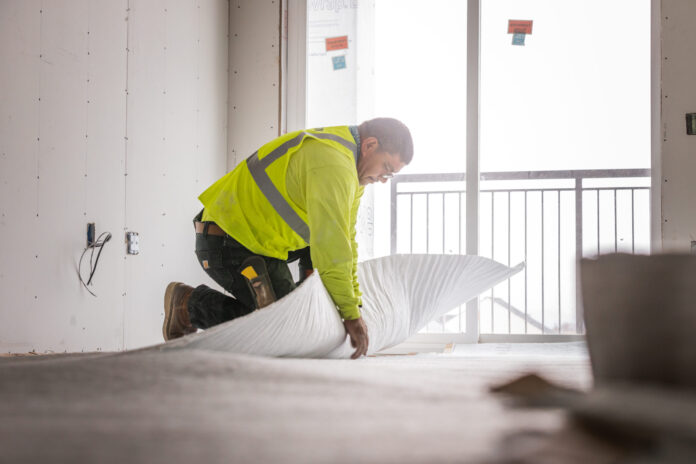
Renovating for tranquility isn’t just about adding value to your home; it’s about enriching your life’s quality. With this comprehensive guide, creating a cocoon of comfort is well within reach.
Revel in the silence, and bask in the serenity that your newly soundproofed space offers. A peaceful abode awaits!
